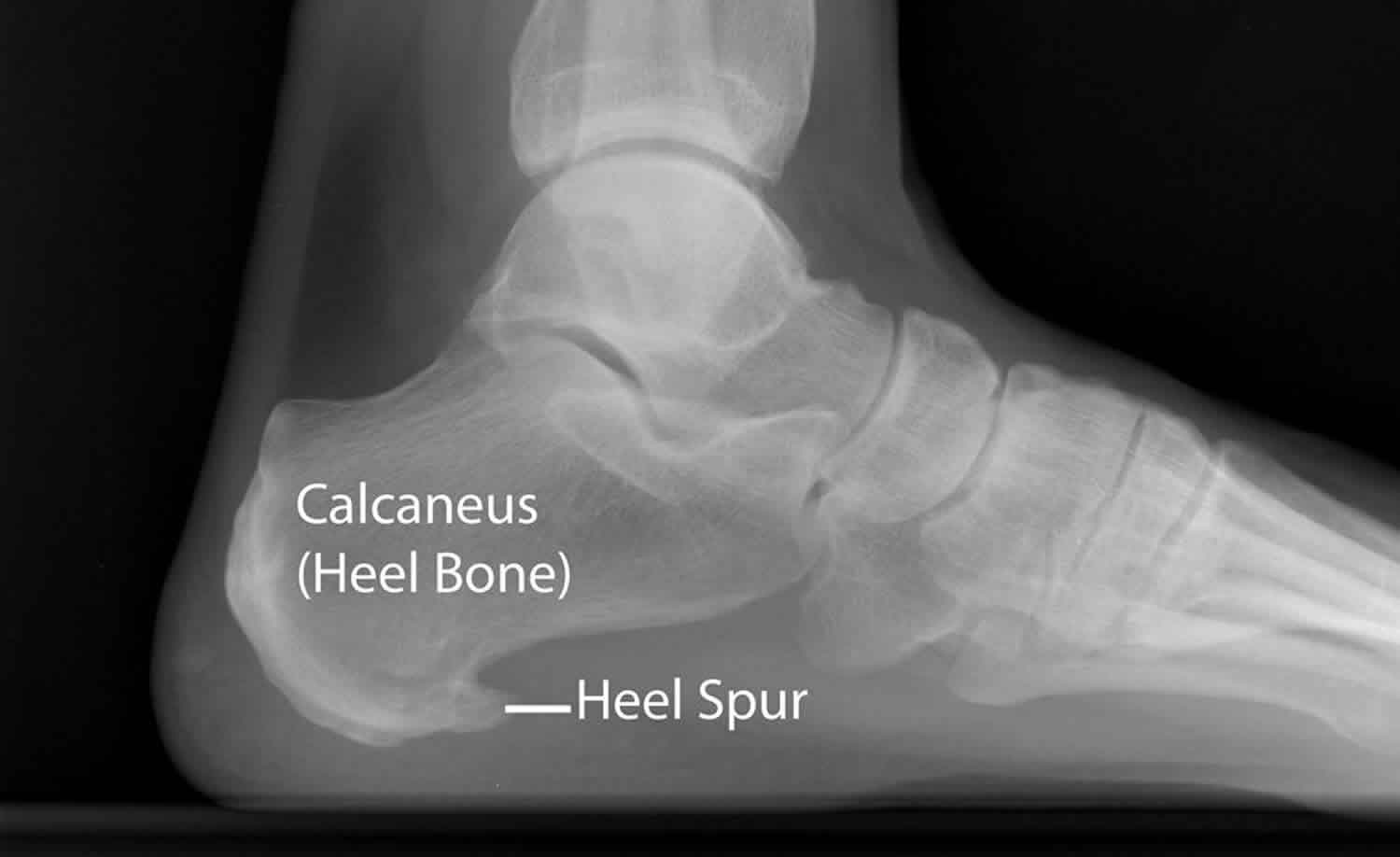Contents
What is calcaneal spur
Calcaneal spur also known as heel spur, is a bony growth on the underside of the calcaneal bone. One out of 10 people has calcaneal spur, but only 1 out of 20 people (5%) with calcaneal spurs has foot pain. Because calcaneal spur is not the cause of plantar fasciitis, the pain can be treated without removing the spur.
Calcaneal spur, visible on X-ray only, appears as a protrusion that can extend forward as much as half an inch. When there is no indication of bone enlargement, the condition is sometimes referred to as “heel spur syndrome.” Calcaneal spurs result from strain on the muscles and ligaments of the foot, by stretching of the long band of tissue that connects the calcaneus and the ball of the foot, and by repeated tearing away of the lining or membrane that covers the heel bone. These conditions may result from biomechanical imbalance, running or jogging, improperly fitted or excessively worn shoes, or obesity.
Do calcaneal spurs always cause calcaneal pain?
No. It’s possible to have a calcaneal spur — a bony growth that usually begins on the front of your calcaneal bone and points toward the arch of your foot — without realizing it. Calcaneal spurs don’t always cause pain. In fact, calcaneal spurs often show up unexpectedly on X-rays taken for some other problem.
Calcaneal spurs occur in at least half the people who have plantar fasciitis, a painful condition involving the thick tissue that runs between your calcaneal bone and your toes.
In the past, doctors often performed surgery to remove calcaneal spurs, believing them to be the cause of the pain associated with plantar fasciitis. In treating plantar fasciitis now, doctors rely more on ice, arch supports (orthotics), physical therapy and pain medications, and surgery is rarely performed.
What causes calcaneal spur?
Calcaneal spurs form when calcium builds up on the underside of the calcaneal bone. This can happen due to strain on the muscles and ligaments or stretching of the plantar fascia. Things that put you at risk of calcaneal spurs include:
- problems with how the feet function (biomechanics)
- running on hard surfaces
- unsupportive footwear
- being overweight or obese
Calcaneal spur prevention
To prevent calcaneal spurs, wear appropriate footwear, manage your weight, avoid exercising on hard surfaces and keep feet and leg muscles and joints flexible. Warm up and stretch properly before you exercise.
Calcaneal spur symptoms
Calcaneal spurs cause intermittent or chronic pain when inflammation builds up where the calcaneal spur connects to the soft tissues of your foot. You may feel pain when walking or running, especially on hard surfaces.
Calcaneal pain is usually caused by injury and inflammation to soft tissues, for example plantar fasciitis, and not by the calcaneal spur itself.
You may feel a sharp pain when pressure is applied in the area, such as when you stand up or when getting out of bed in the morning. After a while, the pain may become a dull ache.
Calcaneal spur diagnosis
A calcaneal spur can be diagnosed using an X-ray.
Calcaneal spur treatment
Treatment for calcaneal spurs may incorporate a range of options:
- footwear needs to fit, provide adequate support for the types of activity you do, and not cause you any pain
- strapping/taping to support the foot, taking the strain away from the foot muscles and plantar fascia, which allows the area to heal
- stretching exercises for the plantar fascia and calf muscles
- orthotics for your shoes that support, align and improve how your foot functions
- medication such as anti-inflammatories to reduce pain and inflammation in the area
- surgery is only considered after all other treatments fail. Surgery may involve removing the spur from the bone, though it can also involve releasing the plantar fascia
It usually takes about 6 to 8 weeks to recover from a calcaneal spur, when the area is strapped and rested.





